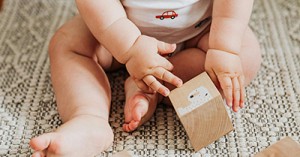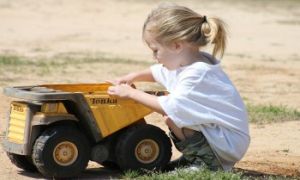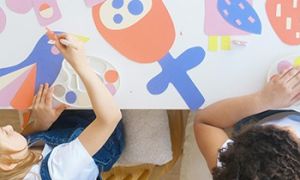Children love being barefoot! It's comfortable and it enables them to feel free. Feeling the freedom of their movements allows them to feel more liberated. The following article provides information on the Benefits Of Being Barefoot, Safety Considerations and Strategies To Get Started.
Benefits Of Being Barefoot
When a child walks with bare feet, not only does it improves walking, balancing and movement, it also can provide a range of health benefits.
Stimulate Pressure Points and The Nervous System - Feet are hard-wired with multiple pressure points and nerve endings to convey messages to other parts of the body. Going barefoot stimulates them and the entire nervous system.
Strengthen Joints and Muscles - Walking barefoot strengthens the muscles in children’s feet and ankles, improving balance and posture. It engages the feet’s arches, strengthens them, and improves the alignment of muscles throughout the legs.
Strengthens Feet and Body - When barefoot, we grip the ground more easily using the muscles of our feet and toes, strengthening them and reducing the risk of trips and falls. Walking barefoot allows us to maintain the full function of our feet.
Foster a Connection With Nature - Children become more aware of their surroundings – how the ground feels, is there a sharp rock ahead - their senses are heightened They feel the papery leaves crunching underfoot. The softness of the grass. The sharpness of prickles. When all five senses are fully engaged, they completely connect with nature and children develop an appreciation of the natural world they are walking through.
Allowing children to directly feel what they are walking on allows stronger messages to be sent to the brain about exactly how is best to walk on certain types of surfaces. It is argued that shoes cloud these messages, and cause more accidents.
Children That Spend Time Barefoot May Have Increased Motor Skills
A study has shown that children who spend most of their time barefoot have increased motor skills and are better in jumping and balancing scientists say.
This study is published in the journal "Frontiers in Pediatrics". It assesses the relevance of growing up with shoes vs barefoot, in motor performance such as jumping, balancing and sprinting during the different stages of child development.
Reports show that children who habitually walk barefoot are noticeably better in jumping and balancing compared to those children who wear shoes, particularly between the ages of 6-10 years.
This research also highlights the importance of barefoot exercise for motor skill development as a child grows and matures.
Safety Concerns Of Allowing Bare Feet
Throughout the learning environment (both indoor and outdoor) a variety of experiences are set up which can cause incidences when not wearing shoes such as slipping in water, stepping on toys such as Legos and dropping scissors onto bare feet.
Safety Considerations To Keep In Mind
- Insist children wear sunscreen on their feet. Feet can get sunburned just like any other part of the body—it’s important to keep feet protected from the sun.
- Keep the temperature in mind. On a warm day, sand or asphalt may cause serious burns. If it’s a bright sunny day, you might want to insist your child wear shoes while outside.
- Ensure walking surfaces are free of hazards at all times by tidying away toys and craft items, mopping up spills, and sweeping away sharp sticks or stones.
- Be sure that the centre is kept at a comfortable temperature. Keep the heat on during the winter months and lay rugs down on the floor. This will keep children from having to walk on a cold floor.
Our skin is designed as a barrier to keep out pathogens, with a higher probability of becoming ill from touching something with our hands than our feet. Being barefoot toughens the soles of the feet, so unless children are walking through a dangerous area, the likelihood of an injury is slim.
Strategies To Get Started On Being Barefoot
- Create a Barefoot Policy and get feedback from parents. Explains the reasons behind this policy, and the safety measures that will be taken.
- Be mindful when shoes are necessary and ensure all educators know when children need to have their shoes back on.
- Explain to children when and why shoes are required, such as when it's time to go home, so they understand when it's okay to be barefoot.
- Encourage children to take their shoes off when they arrive and throughout the day to walk on a variety of different surfaces regularly such as dirt, sand, gravel, stones, carpet, tiles, and floorboards.
- Place a shoe rack or basket in each room or at the front of the centre, so shoes are stored neatly and out of the way and can be located easily when needed. Teach the children where to place their shoes when they take them off, and to put socks inside their shoes so they don’t get lost.
- Consider having educators go barefoot at various times of the day to model the behaviour.
- Set up sensory activities for the feet such as walking in slime or set up different trays with different materials like sand and water to stand in.
- Make sure to have plenty of towels for drying feet in case they require rinsing off throughout the day.
- Don't force children to take their shoes off if they want to keep them on. In time they will follow what other children are doing so best to let them welcome the behaviour on their own terms
Being barefoot enables children to relax, and reawaken their senses. It also helps them understand spatial awareness, it gives them a sense of different textures under their feet and helps their feet develop naturally. Research also tells us that children thrive in the outdoors and natural environments, so not having shoes as a barrier between feet and the natural world increases the health-promoting effects of spending time in nature for social and emotional well-being.
References:
- Children Go Barefoot, Early Years Careers
- Children That Spend Time Barefoot May Have Increased Motor Skills, Child Weekly
- Barefoot Kids, Your Modern Family
- The Benefits Of Letting Children Go Barefoot, You Are Mom
- Lose The Shoes How Children Can Benefit From Barefoot Learning, Care For Kids Australia







 As an Educator in Australia, your pay rate falls under the Children’s Services Award 2010. This award states the minimum amount that an employer can
As an Educator in Australia, your pay rate falls under the Children’s Services Award 2010. This award states the minimum amount that an employer can When working as a qualified Early Childhood Teacher (with a university degree) within a service, your rate of pay will come from the Educational Services
When working as a qualified Early Childhood Teacher (with a university degree) within a service, your rate of pay will come from the Educational Services When working as a Diploma Qualified Educator your pay rate is from the Children's Services Award 2010. This Award states your minimum rate of pay
When working as a Diploma Qualified Educator your pay rate is from the Children's Services Award 2010. This Award states your minimum rate of pay When working as a Cert 3 Qualified Educator, your pay rate is from the Children's Services Award 2010. This Award states your minimum rate of
When working as a Cert 3 Qualified Educator, your pay rate is from the Children's Services Award 2010. This Award states your minimum rate of Educational Leaders play a crucial role in their early childhood service by ensuring that the educational program aligns with best practices and supports the holistic
Educational Leaders play a crucial role in their early childhood service by ensuring that the educational program aligns with best practices and supports the holistic In early childhood education and care, ratios are more than a technicality—they are a frontline safeguard. Every child deserves responsive supervision, emotional connection, and developmental
In early childhood education and care, ratios are more than a technicality—they are a frontline safeguard. Every child deserves responsive supervision, emotional connection, and developmental With the new national child safety reforms kicking in on 1 September 2025, early childhood services like yours have a real opportunity to lead the
With the new national child safety reforms kicking in on 1 September 2025, early childhood services like yours have a real opportunity to lead the Here’s a comprehensive Mobile Phone and Smart Watch Policy tailored for early childhood education and care (ECEC) services in Australia, aligned with the latest 2025
Here’s a comprehensive Mobile Phone and Smart Watch Policy tailored for early childhood education and care (ECEC) services in Australia, aligned with the latest 2025 The Sea of Fish Challenge is a national initiative that invites children, educators, families, and communities to create and display fish artworks as a symbol
The Sea of Fish Challenge is a national initiative that invites children, educators, families, and communities to create and display fish artworks as a symbol Across the early childhood education and care sector, educators are sounding the alarm: current staffing ratios are insufficient to deliver safe, meaningful, and developmentally appropriate
Across the early childhood education and care sector, educators are sounding the alarm: current staffing ratios are insufficient to deliver safe, meaningful, and developmentally appropriate


